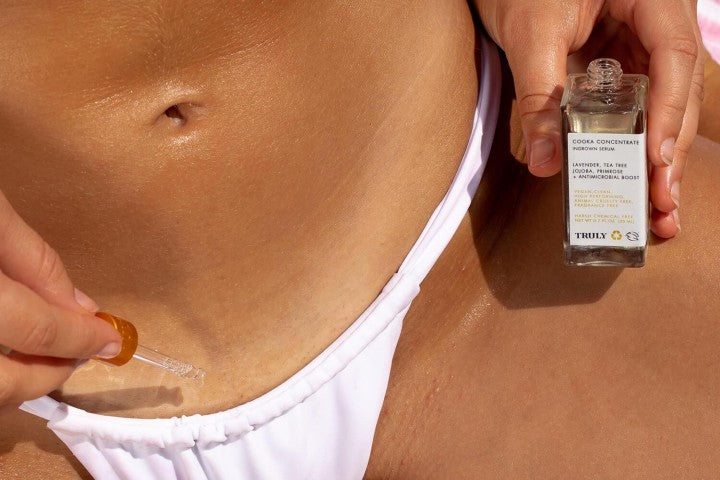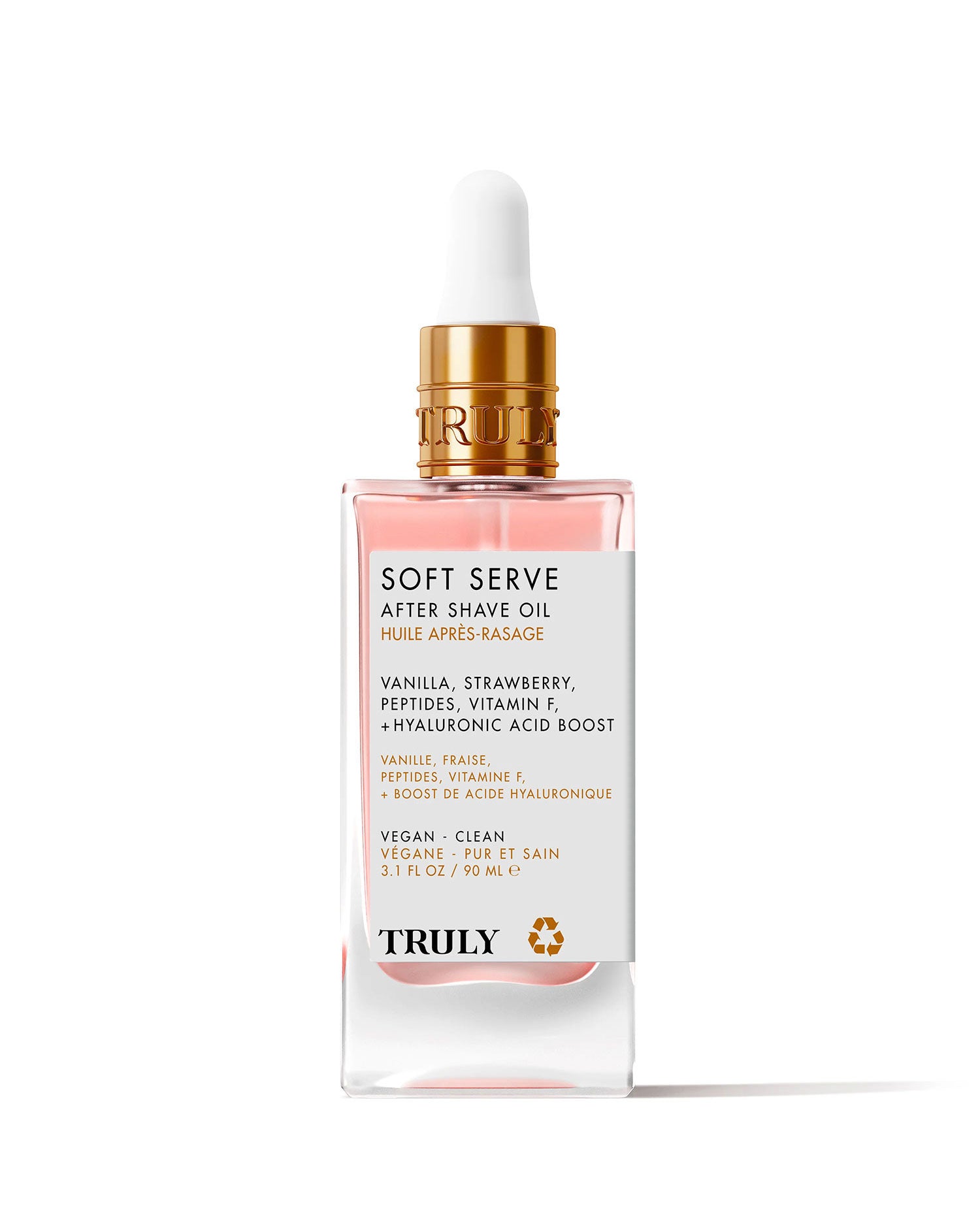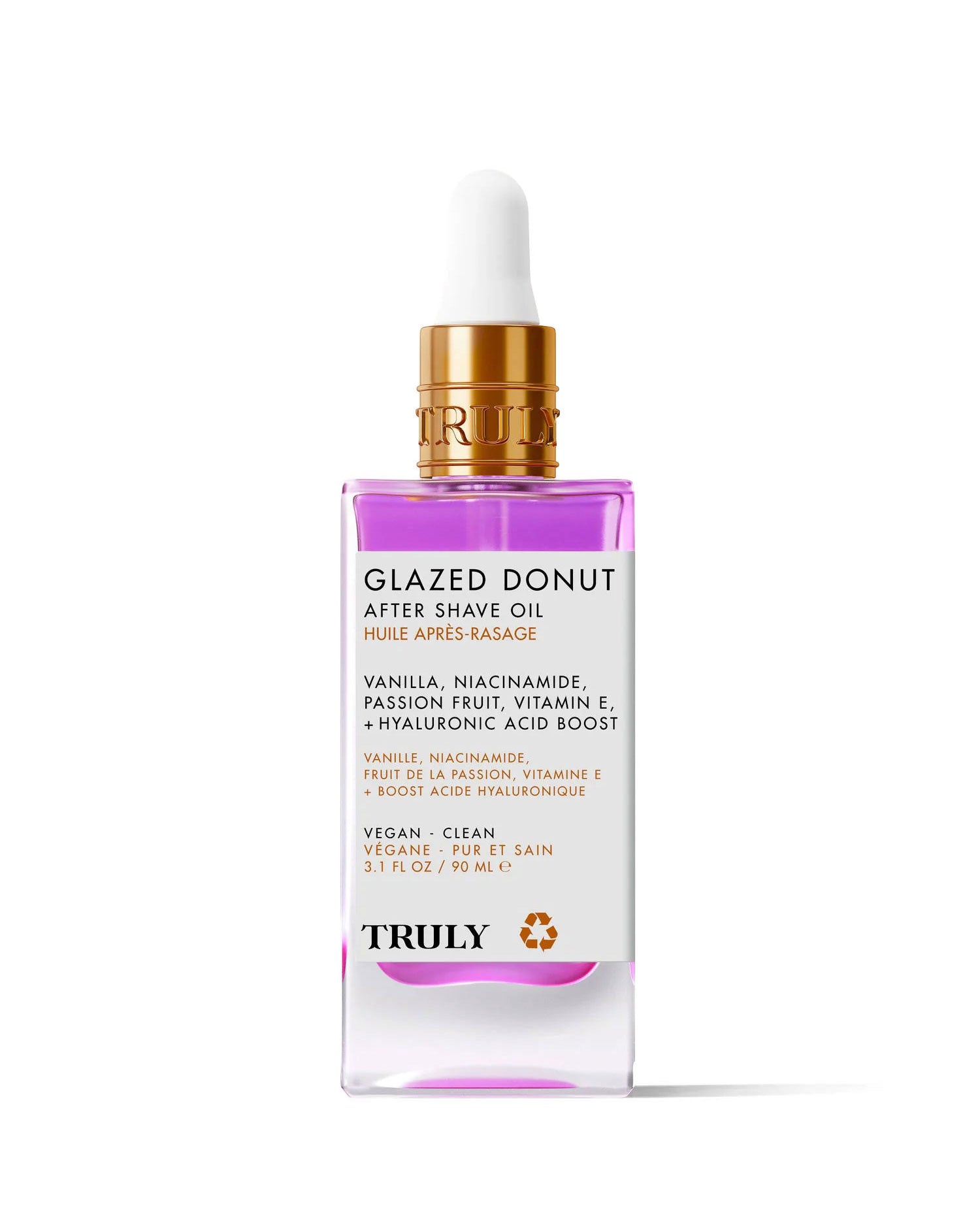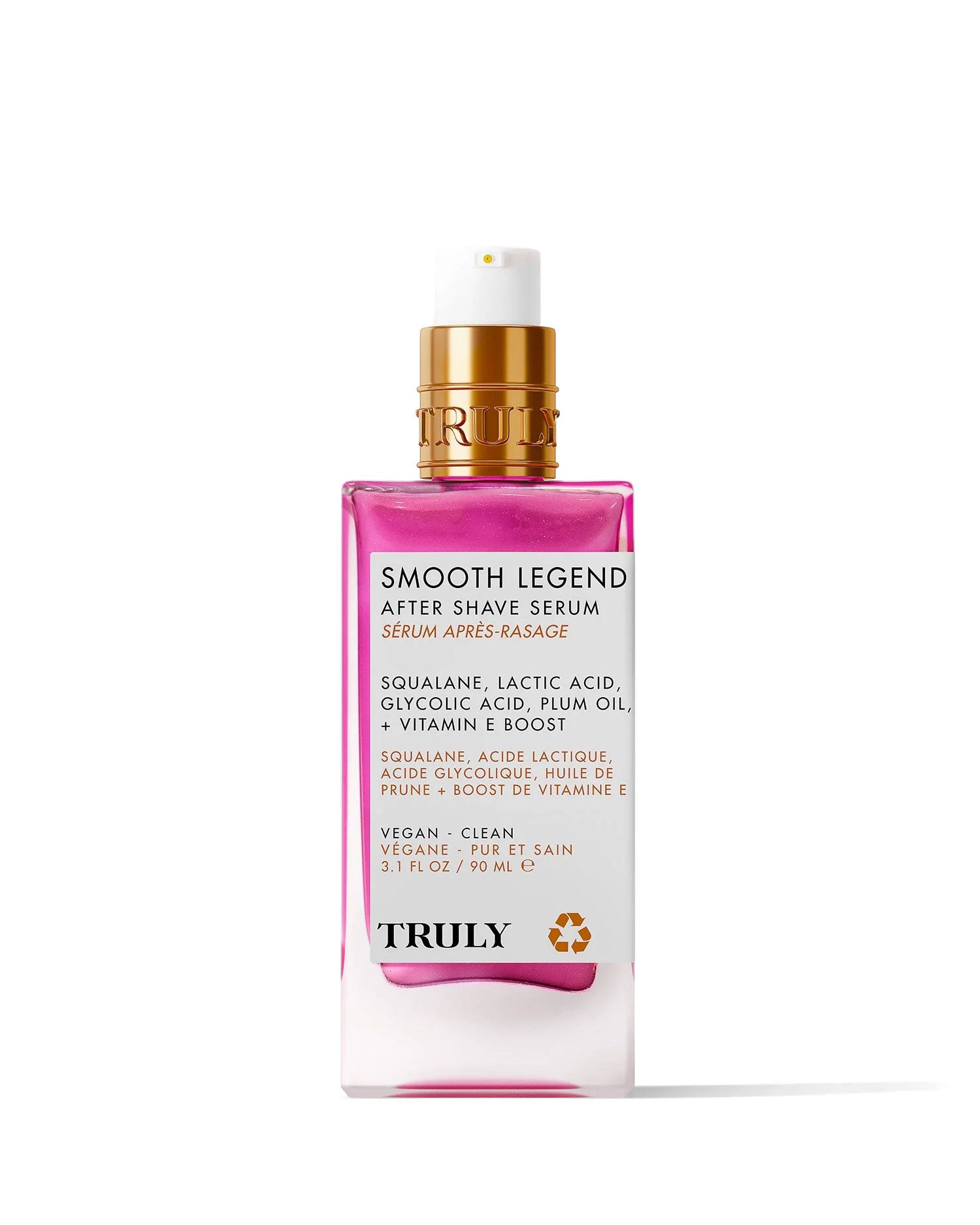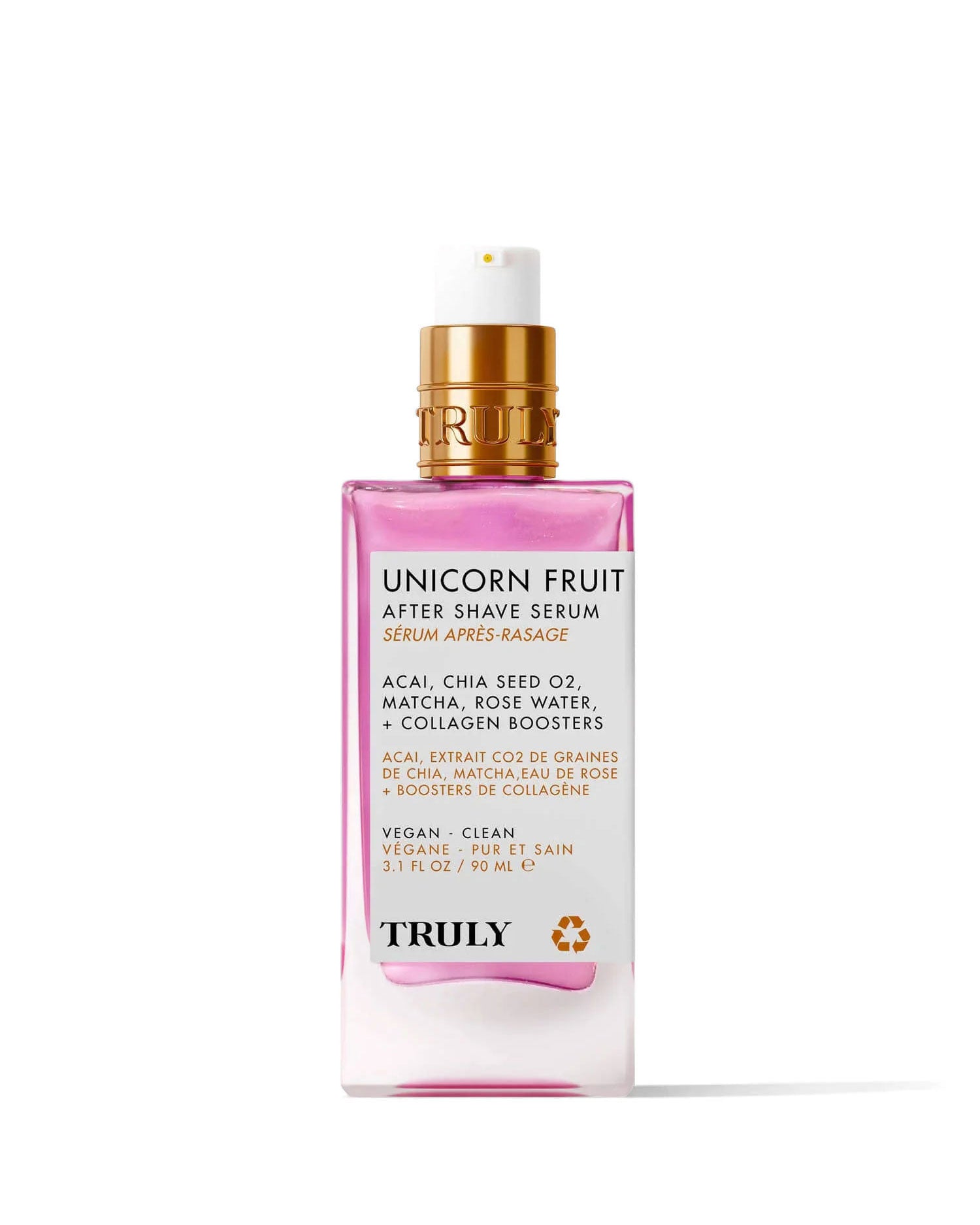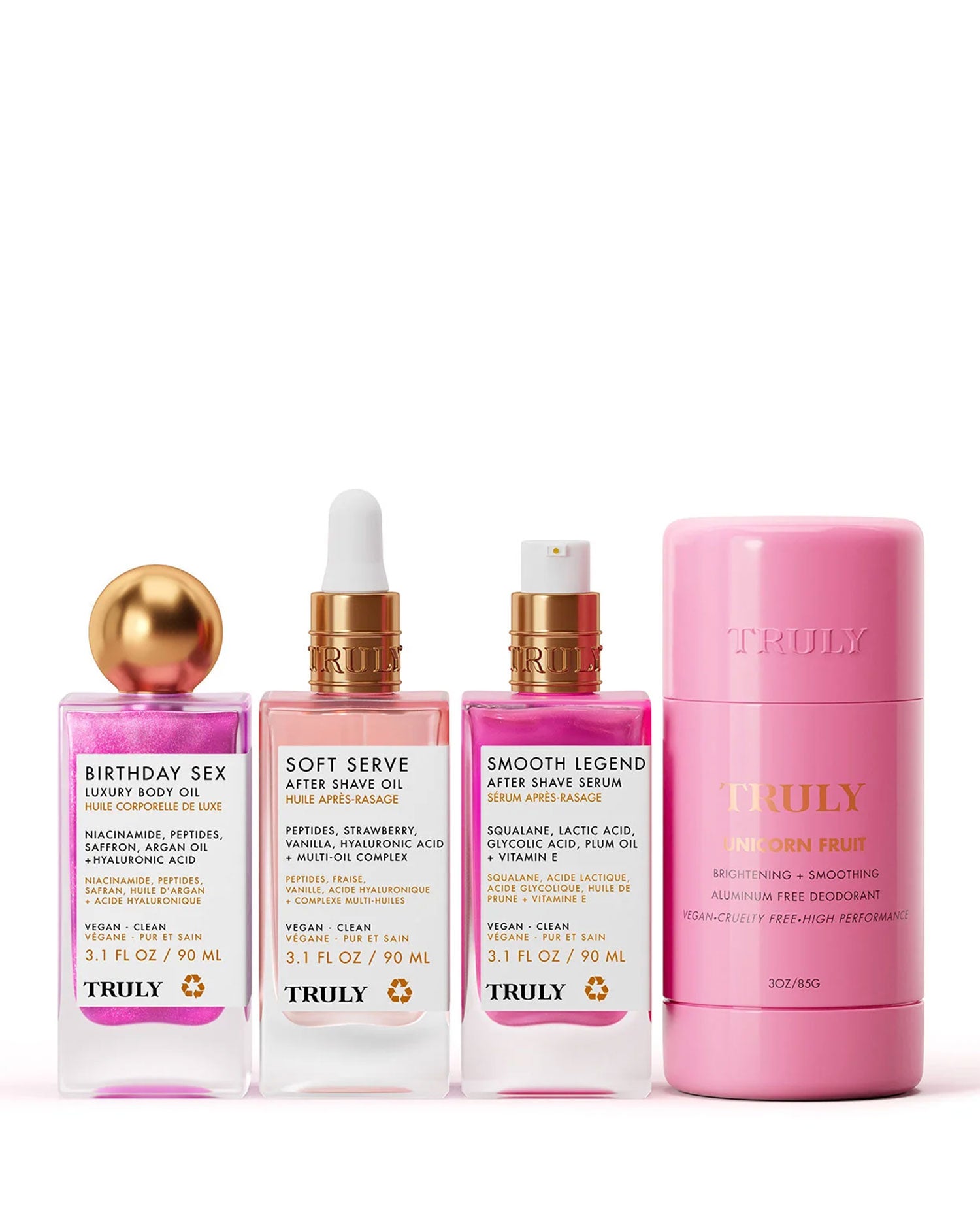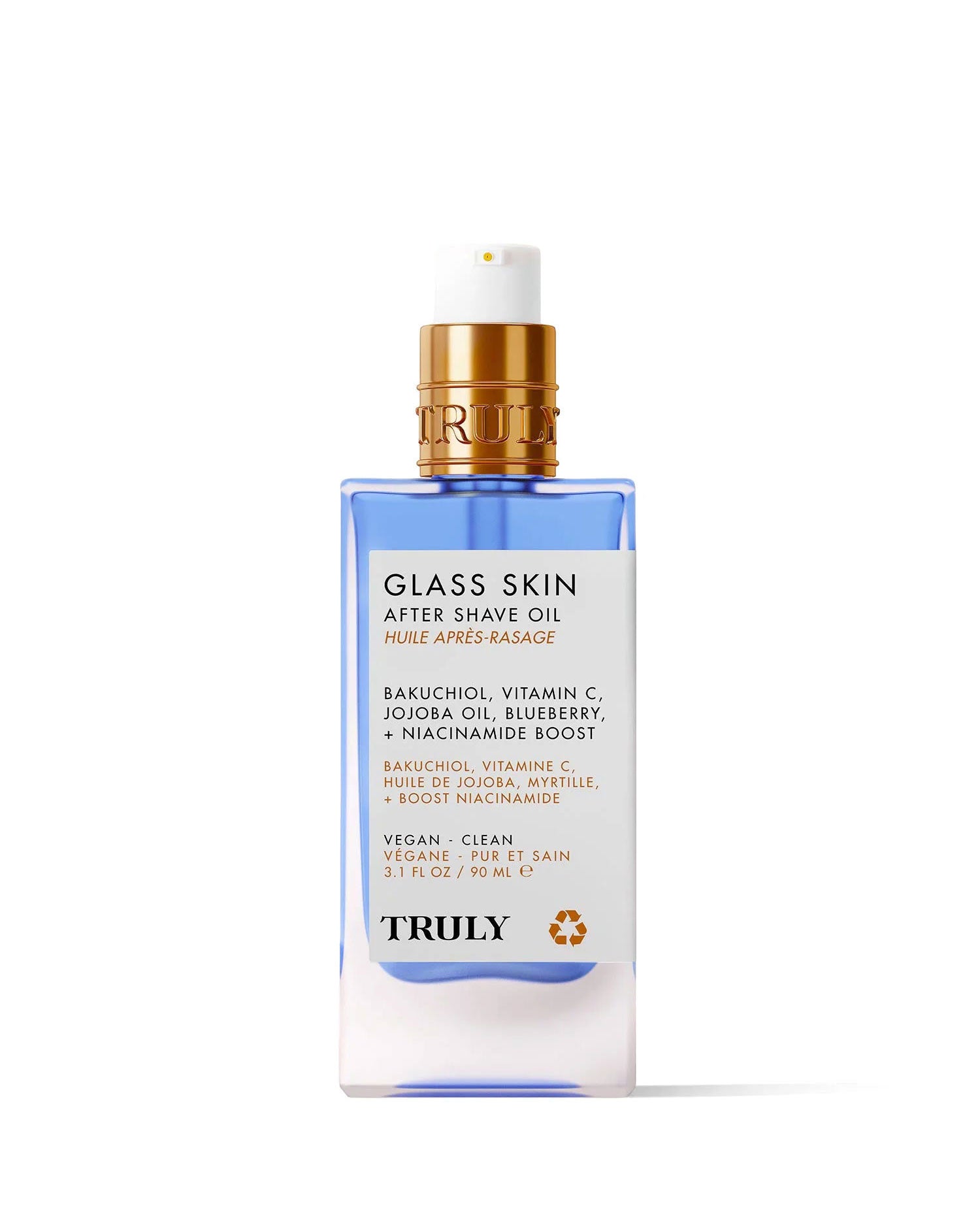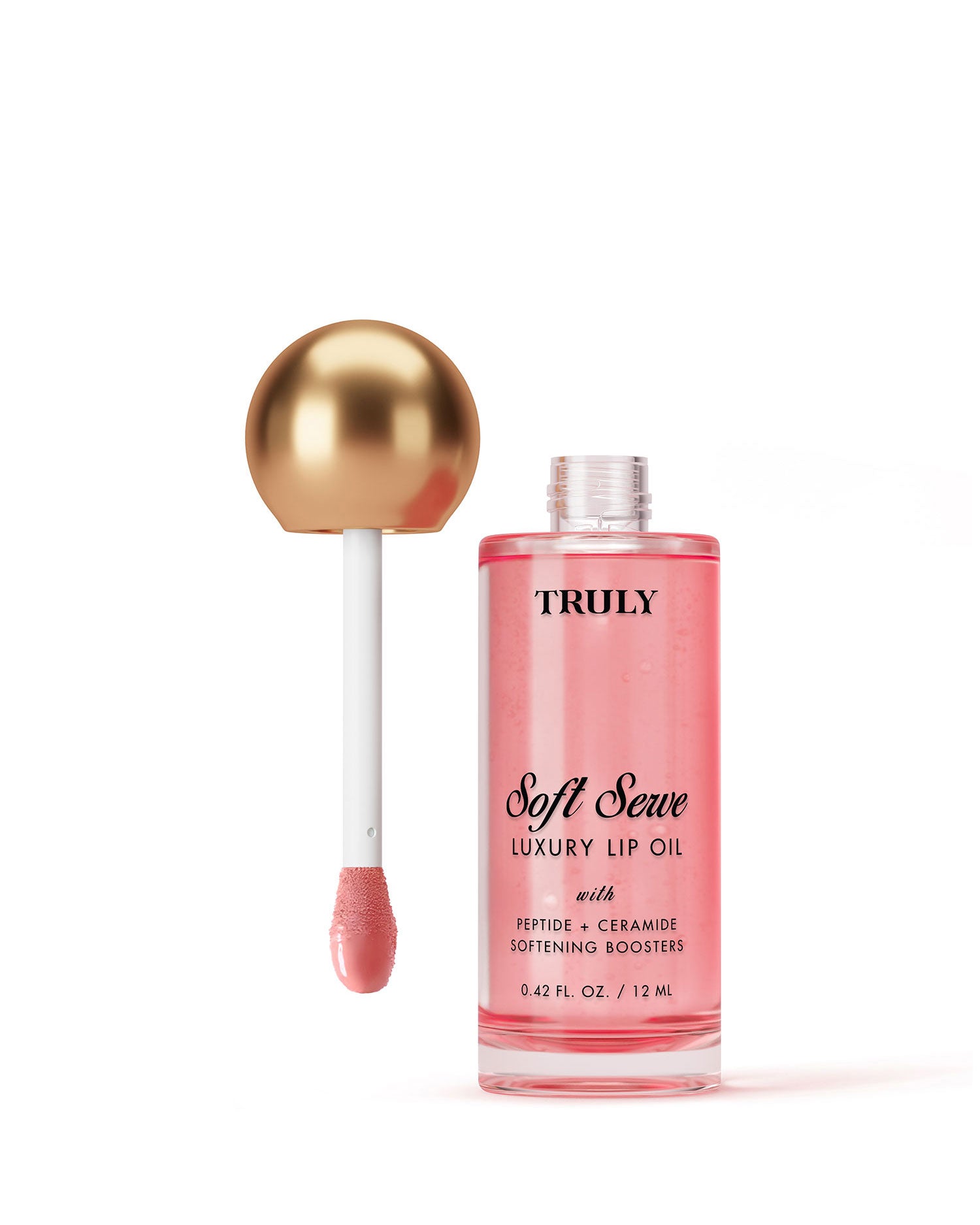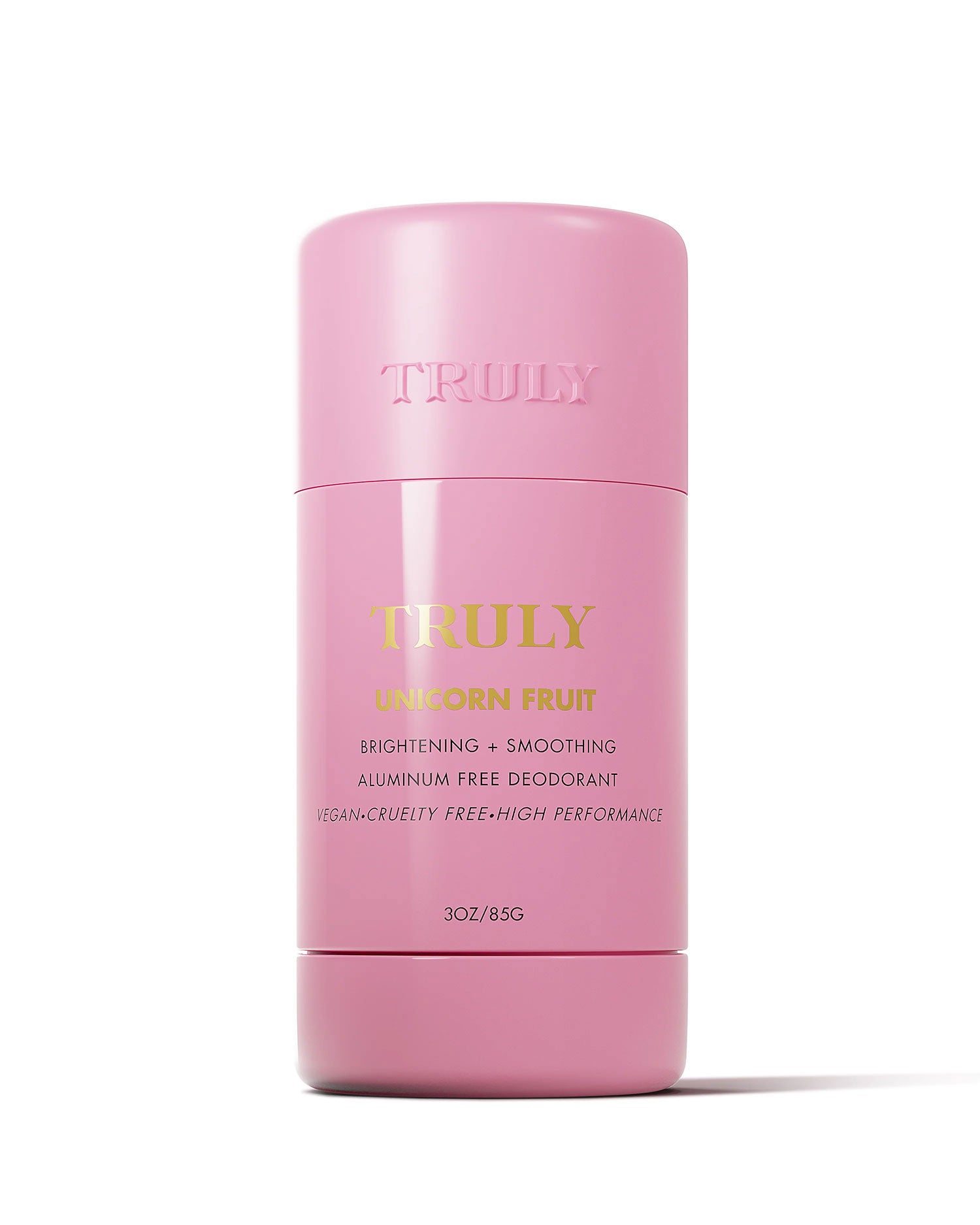How to Treat Folliculitis After Waxing
June 06, 2022
By: Truly Beauty
If your chosen hair removal method is waxing, you may experience the occasional flareup of folliculitis. While waxing itself doesn’t cause breakouts, it’s easy for bacteria to enter open pores after a waxing session. If you’ve been getting little red bumps, whiteheads, or pimple-like bumps after waxing, it might not actually be acne. It might be folliculitis, a skin condition that commonly affects waxers.
The good news is, you don’t have to put up with these frustrating bumps every time you wax. Here’s what you need to know about folliculitis, from what it is to how to treat and prevent it.
WHAT IS FOLLICULITIS?
Folliculitis is essentially inflammation of the hair follicle (aka, an infected hair follicle). Since the body is covered in hair follicles, folliculitis can show up pretty much anywhere. However, it most commonly appears on the arms, back, legs, butt and groin area. The most common types of folliculitis include barber’s itch, hot tub rash, razor bumps, and shaving rash.
Folliculitis can be caused by many different factors, from spending time in a hot tub (aka, hot tub folliculitis) to using an old, dirty razor and of course, waxing. Sweat, bacteria, and even dry skin are all common factors. Even wearing tight clothing can trigger folliculitis due to friction.
Many people confuse folliculitis with acne, but they’re not the same thing. For starters, acne is only located on your face, chest, or back whereas folliculitis can crop up anywhere there’s a hair follicle. Additionally, acne is caused by clogged pores whereas folliculitis is caused by inflamed hair follicles.
WHY ARE YOU EXPERIENCING FOLLICULITIS AFTER WAXING?
It is not uncommon to develop folliculitis after waxing, or any form of hair removal for that matter. This pimple-like rash is usually caused by inflammation, and goes without on its own within a few days.
If you develop waxing bumps a couple of weeks after your session, they may be the result of ingrown hairs. Ingrowns are a type of folliculitis that occurs when hair grows back into the skin instead of out of the skin’s surface.
Is your freshly waxed skin developing an acne-like rash? You could be dealing with folliculitis. Fortunately, there are many ways you can treat and prevent this skin concern.
HOW TO GET RID OF FOLLICULITIS AFTER WAXING
Here are the best folliculitis treatments to try in the days after a waxing session.
Use an Exfoliating Cleanser
Using a cleanser with exfoliating acids like salicylic acid can help slough away dead skin cells and unclog hair follicles. It’s also worth looking out for a formula with antibacterial benefits to ward off folliculitis-causing bacteria.
We recommend Truly’s Cherry Jelly Body Cleanser. It’s made with a blend of bacteria-zapping BHAs and antibacterial agent — mandelic acid — to clear up your bumps. It also contains soothing niacinamide and hydrating allantoin to prevent your skin from drying out or becoming irritated.
Apply a Cool Compress
Using an ice pack or a clean washcloth soaked in cold water, apply your chosen cold compress to help soothe the affected area. Let it sit on the skin for 10-20 minutes until the irritation subsides. If you’ve got an ingrown hair, use a warm compress instead to help draw the unwanted hair out.
Treat with an Antimicrobial Serum
If you’re dealing with folliculitis or severe sensitive skin after waxing, turn to a topical antimicrobial skincare treatment to quell inflammation.
We recommend Truly’s Cooka Concentrate, a powerhouse formula designed to relieve and prevent ingrown formation while soothing irritation. Made with lavender and tea tree oil, this formula is packed with antibacterial, antimicrobial, and anti-inflammatory properties. All of which help to reduce inflammation and promote healthy, strong hair growth.
Moisturize
Moisturizing the area with a soothing lotion can help quell inflammation and serve as a barrier to prevent rubbing and friction.
We recommend Truly’s Coco Cloud After Shave Moisturizer. Enriched with ultra-hydrating shea butter, soothing coconut milk, and nourishing vitamin E, Coco Cloud can help relieve irritation, diminish dryness, and deliver your smoothest skin.
Apply Aloe Vera Gel or Witch Hazel
There are quite a few over-the-counter options and home remedies if you’re looking to reduce the painful side effects of your wax. Some of those include aloe vera, gel, witch hazel, or a cooling body spray like Truly’s Volcanic Rosewater Mist, which contains both. Hydrocortisone cream is another great OTC option for quelling inflammation.
WAYS TO PREVENT POST-WAXING FOLLICULITIS
Here are the best ways to prevent folliculitis from appearing after your waxing session.
Prep Properly
To reduce your chances of getting folliculitis, make sure you prep properly before getting waxed. Use a gentle exfoliant to buff away the dead skin, cleanse the area with warm water and soap, and steer clear of irritating skincare products.
Wear Loose Clothing
Always remember to wear loose clothing around the area you got waxed for the first few days after your appointment. Doing this will help to avoid friction and irritation, which contribute to the folliculitis.
Always Choose an Experienced Salon or Esthetician
It’s important to choose a professional provider to prevent the onset of folliculitis. While it can happen to anyone, regardless of someone’s expertise, picking a professional is always the safest way to go to prevent hiccups.
WHEN TO SEE A DERMATOLOGIST?
If you’ve been experiencing folliculitis for over two weeks now, you may be best off consulting your derm. They can prescribe you medication such as steroids (cortisone) or antibiotics if they suspect it’s a severe case of folliculitis. In some cases, you may not actually be dealing with folliculitis at all. It may be acne, contact dermatitis, or another skin condition. Either way, it’s worth getting checked out to receive the appropriate treatment.
Folliculitis isn’t usually dangerous, but it is annoying. If you’re constantly developing folliculitis after waxing, you may want to consider an alternative hair removal method like laser therapy. Speak to your derm or esthetician for professional advice. They’ll be able to lay out all your options when it comes to folliculitis-free hair removal.






